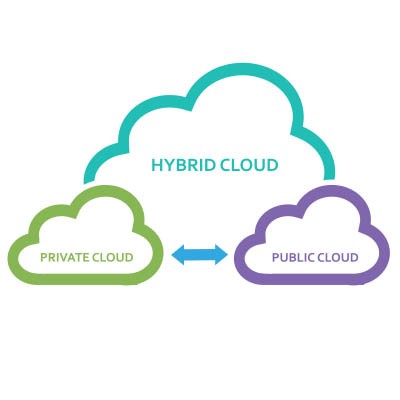Whether you’re aware of it or not, you’re likely already utilizing the cloud in at least some capacity. The trick is to find the best way to manage your business’ cloud so that it works for your organization’s specific needs. Today, we want to look at the different types of cloud management policies and why you need to weigh your options to get the most value for your business.
With the price of hardware at risk of skyrocketing, it’s no wonder that many businesses are looking to virtualize as much of their operations as they can. This is where the cloud comes in; you can virtualize just about any solution, including some that you might not have considered in the past. Let’s explore how an SMB might use virtualization and cloud computing to skirt hardware acquisition costs.
File sharing is a big deal. When you try to send your friends a meme or share a video with them and it doesn’t send… that can be extremely frustrating. When it comes to business file sharing, miscommunication can cost quite a bit. Today, we will look at two concepts in small business file sharing and how they help a small business.
Software is an important part of any business’ toolset, and for small businesses, Software as a Service, or SaaS, is the most cost-effective way to take advantage of it. The most profitable companies in the world run on SaaS, and so too can your business. Let’s go over some of the most powerful solutions your organization can implement in the realm of software and how they can benefit your success.
Through cloud-based technology, your business can change the way it operates in countless different ways, all of which can benefit you in the long run. If you haven’t yet considered cloud-based solutions for infrastructure, then you could be missing out on some of the greatest innovations of the past decade. Here are some ways your business can start to leverage the cloud to its advantage.
The cloud has turned out to be a complete game changer for the way people compute. For any business, this can offer opportunities that would not be possible without cloud computing. This week, we take a look at the different types of cloud computing with an eye toward how small businesses can gain value from choosing them.
While one of the big selling points of the cloud has always been how cost-effective it can be, it is important to remember that this isn’t always the case. There are situations where the value that a business gets from the cloud isn’t really worth the price of admission. Let’s take a few moments to break down how you can evaluate the value that the cloud can offer you, and how to use this data to your advantage.
Television has come a long way since its inception, and entertainment is more accessible today than it has ever been before. Technology has played a large part in the dissemination of this entertainment, so we thought we’d take a look at how the cloud has contributed to making television the cornerstone of leisure that it is today.
The cloud has helped countless organizations all over the world establish themselves as powerhouses of their industries through dynamic and flexible solutions. One of the biggest reasons why the cloud is so effective—particularly for growing companies—is because of how scalable it is. Let’s examine how this scalability can help your company succeed despite how much it grows.
With cloud computing working wonders for small and medium-sized businesses of all types, you may gain confidence in finding hosted platforms that can help your business. Make no mistake about it, the cloud can work for your business in one way or another. This week, let’s go through how cloud options can help you improve your business’ computing.
The cloud is a great business tool and resource, enabling businesses to offset a lot of their IT workload onto these providers. If you haven’t migrated some or all of your business’ technology to take advantage of the cloud, it is certainly something to consider.
If you’re already considering it, we wanted to offer a few tips to help make the process more effective for you.
The cloud is far and away one of the most beneficial technologies that a modern business has at its disposal. Unfortunately, the same can be said for modern cybercriminals. The cloud has given cybercriminals new opportunities that are important to acknowledge—as well, of course, to protect your business against.
The cloud is one way that businesses are changing their operations for the better. Not only does the cloud enable organizations to function in drastically different ways from the status quo, it also gives businesses countless opportunities to reduce costs. Here are just a few ways you can expect the cloud to reduce your expenses and improve your return on investment for IT resources.
Look, we are big fans of the cloud, especially for data storage, but you shouldn’t implement the cloud without a solid security strategy. Whether you are using it for your business’ data storage needs or just to take backups of your infrastructure, you’ll still need to keep various facets of security in mind for your cloud storage. It all starts with figuring out how secure your cloud provider really is.
Cloud computing has been a hot topic in IT circles for a few years. First because of the skepticism that many IT professionals had for the practice, and now that it is a mainstream business technology, ways to boost security to protect the organization who has embraced this computing strategy. We’re here to tell you that while cloud computing is convenient, flexible, and seemingly affordable, there are instances where having physical machines makes more sense for a business.
When it comes to your desktop infrastructure, your company has several different options available to it, one of which is Desktop-as-a-Service. How does this option compare to having a traditional workstation, and why might a small business get value out of Desktop-as-a-Service? Let’s take a closer look at what DaaS involves.
The cloud is a great opportunity for businesses to increase accessibility of data and enhance productivity, especially while remote, but for those who do not know how to approach it, the cloud can be intimidating. Today, we are going to make the case for a private cloud solution and why you should consider it as a viable option for your business, even if it does not seem like it at the moment. You might be surprised by what you learn!
It’s not unheard of for some threats to remain undiscovered for months or even years, as is the case with a particularly nasty one in the Microsoft Azure database system. This exploit, discovered by cloud security provider Wiz, is built into Cosmos DB, Microsoft Azure’s managed database service. Let’s take a look at the exploit and see what we can learn from it.
After the past few years, the hybrid workplace has risen in its perceived value, the benefits of allowing employees flexibility in where they work from becoming very clear. That said, while the hybrid workplace is much closer to a reality than ever before, there are a few hurdles that must be cleared first.
When it comes to implementing new technology solutions, it’s easy to get distracted by all of the great possibilities and miss all of the challenges that it represents. The cloud in particular represents countless chances to improve operations and enhance efficiency, but the side of this is that there are many issues that could arise during the cloud migration process. Let’s consider some of these challenges and how we can help you get around them.





















